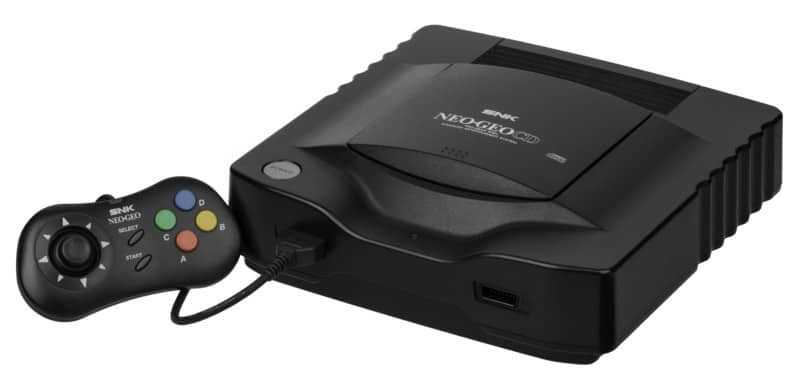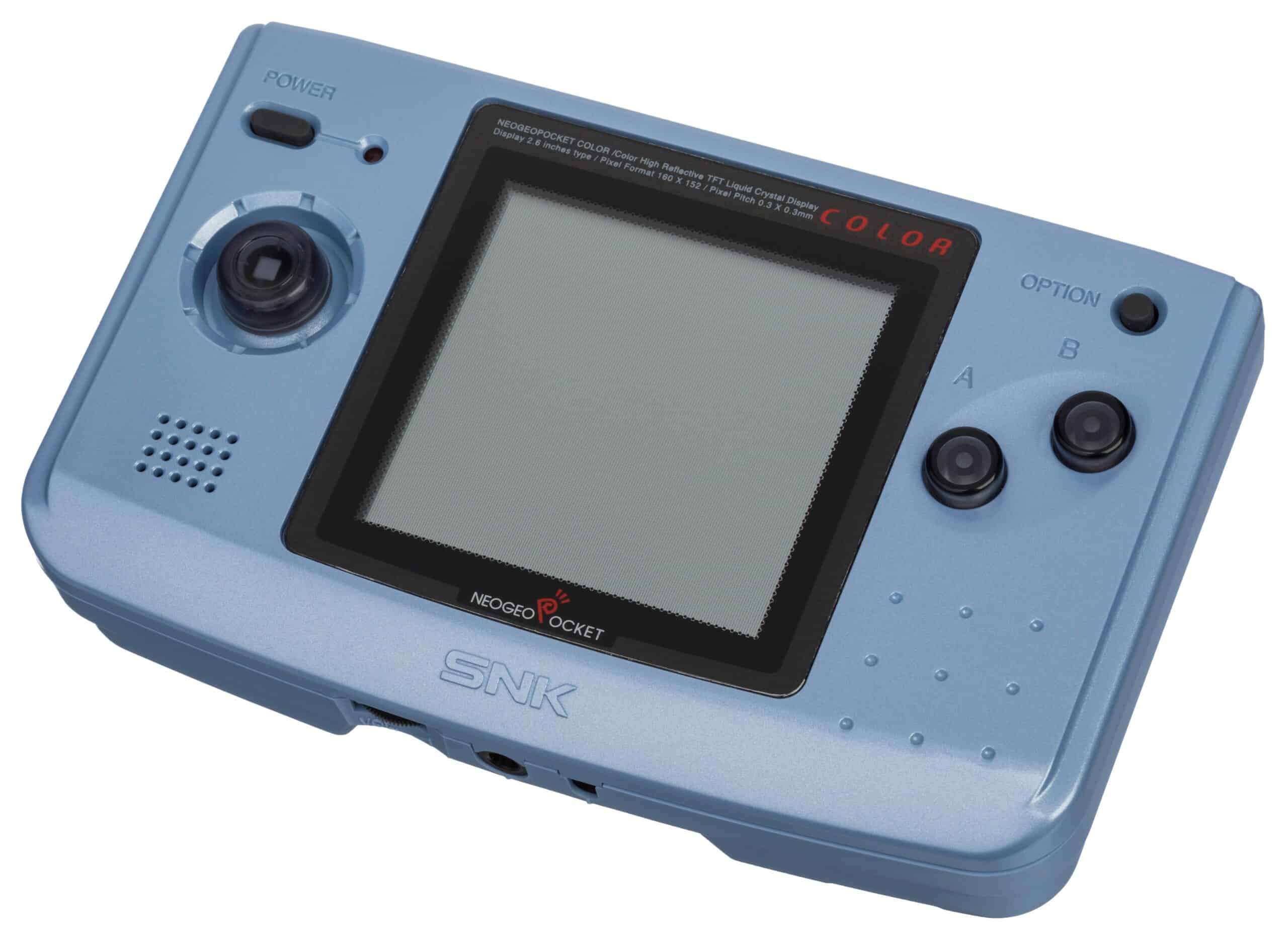Key Facts
- The Neo Geo AES/MVS, Neo Geo CD, and Neo Geo Pocket/Color were the Neo Geo consoles released.
- The Neo Geo Pocket was released in 1998 but hastily withdrawn and the Neo Geo Color was released. However, the 40-minute battery life and lack of a backlit screen of the latter prevented it from being able to threaten the Game Boy Color’s dominance.
- At present, Neo Geo remains a favorite among retro gamers eager to relive fond memories of an earlier era of gaming.
Key Facts
While Sega and Nintendo are the two most memorable names of the 1990s console wars, they were not the only competitors vying for console space in your home. Part of the fourth generation of gaming, the Neo Geo was a cartridge-based console that marked the first time SNK, Neo Geo’s parent company, would try to counter the popularity of both Nintendo and Sega.
While they were not successful in their console efforts, the Neo Geo lineup of consoles and games still marks a moment when video arcade gaming truly entered the home. Arcade gaming at bowling alleys and dedicated arcades still remained popular with kids and adults, so the concept of SNK bringing that home was a different way of thinking that Sega and Nintendo were not attempting.
Here’s a look at the history of Neo Geo’s consoles and a look at what could have been.
Quick Facts
| Neo Geo AES/MVS | Neo Geo CD | Neo Geo Pocket/Color | |
|---|---|---|---|
| Release Dates | April 26, 1990 | September 9, 1994 | October 28, 1998, March 16, 1999 |
| Discontinued | 1997 | 1997 | 2001 |
| Units Sold | 1.18 million | 570,000 | 2 million |
| Introductory Price | $649 | $399 | $69.95 |
| Key People | Eiji Fukatsu | Unknown | Unknown |
| Notable Titles | Metal Slug 3, Waku Waku 7, Magician Lord | Puzzle Bobble, Power Spikes II, King of Fighters ‘96 | Neo Turf Masters, SNK vs. Capcom, King of Fighters R-2 |
History of Neo Geo (SNK)
The origins of Neo Geo began with its parent company, SNK. Also known as Shin Nihon Kikaku, SNK was founded in Osaka, Japan on July 22, 1978, by Eikichi Kawasaki. SNK is best known for its Neo Geo console system and as a video game developer, hardware manufacturer, and publisher that initially focused on arcade cabinet-style games.
Gaining Popularity
With the release of Vanguard in 1981, a side-scrolling space shooter, SNK began to gain international notoriety for its arcade consoles.
After a few years of success, SNK Corporation, which the company took on as its name in 1986, completely shifted its focus toward the development and licensing of video games for arcade use. Prior to that, on October 20, 1981, SNK Corporation of America opened its doors in California with a focus on bringing the company’s arcade cabinets to the North American market.
Between 1979 and 1986, SNK would provide upwards of 23 separate stand-alone arcade games including its most popular title, Ikari Warriors.
Console Origins
Coming out of the video game crash of 1983, SNK found a new income stream by licensing its games on the Nintendo Famicom in Japan as a third-party licensee. By 1988, SNK had created one of its most popular arcade cabinets with the Neo Geo MVS (Multi Video System), which was among the first to enable multiple game titles in a single cabinet.
After debuting the Neo Geo MVS in 1990 and seeing strong sales, SNK turned its eyes to watch the early 1990s “console wars” between Sega and Nintendo. What they discovered was an opportunity to bring their popular arcade titles into the homes of video game fans all over the world.
Neo Geo Versions: Each Edition
Neo Geo AES
Announced on January 31st, 1990, the Neo Geo, SNK’s first entry into the home console market, was released to the world on April 26, 1990. Originally a rental-only unit, SNK would quickly pivot and sell the console at stores as it saw an uptick in console purchases by its competitors.
SNK claimed that the system was 24-bit when it was in reality a 16-bit console that had an additional 8-bit co-processor that doubled as a second CPU. At the time of its launch, the Neo Geo was a direct competitor to the Sega Genesis and Super Nintendo.
Price
Between its specs and the high price tag of $650 in the U.S. market, the “Gold System” quickly became a niche product. For the price, buyers received two joysticks, a memory card, and a Magician Lord game cartridge. The joysticks themselves were something of an anomaly.
Competitor consoles shipped smaller controllers whereas the Neo Geo opted for a larger controller that emulated what gamers were used to with arcade consoles.
SNK would quickly release a “Silver System” which shipped at $399 with only one joystick and no in-pack game. For both systems, games generally cost $200 or more, which was more than triple what Sega and SNES titles were asking.
Differentiation
What really set Neo Geo apart at the time was that you could take a cartridge out of its MVS arcade cabinets and bring it home to its AES system and play. Even with this feature, Neo Geo was only able to maintain its status as a niche console never selling to the likes of its competitors. Moving just over one million consoles, the Neo Geo was also limited by its lineup of games, many of which focused on fighting.
By the end of 1997, the Neo Geo AES was canceled. Software development would surprisingly live on until 2004, again emphasizing the console’s status as a cult favorite.
Neo Geo CD
Following up on the Neo Geo, SNK was looking for a hit and tried to find one with the Neo Geo CD.
Released on September 9, 1994, the system was essentially the same hardware as the Neo Geo, but with a CD drive that was used to help bring down the overall cost of the system. As 32-bit consoles began to take shape from the likes of Sony and Sega, the Neo Geo CD was attempting to gain market share without a big reason to buy.
Price
Priced at $399, the system was bundled with a control pad instead of the joystick that had made the original Neo Geo AES so unique. Unfortunately, for its price, the CD loading time was notoriously slow and quickly frustrated gamers who had to often wait a full minute before a title would load completely.
SNK quickly promised to deliver a model that would double the speed of the built-in CD ROM in North America but never delivered on their commitment. By 1996, SNK announced they would double speeds as the cost was too high until they sold through the initial run of Neo Geo CD consoles.
A version with the double-speed loading CD drive was sold in Japan as a “CDZ” model with North American enthusiasts importing the console. Without a region lock, games launched in the U.S. played much better than the original console release.

Sales
Moving only 570,000 consoles during its three-year lifecycle, the Neo Geo CD was by all accounts a failure. Even as the Neo Geo CD still offered games that were fun to play, its lack of technological advances was a significant disappointment to gamers looking for the next big thing.
By 1997, SNK determined it was time to retire the Neo Geo CD as the lack of 3D polygon graphics combined with slow loading times were unlikely to ever find the CD a true audience.
Hyper Neo Geo 64
Created by SNK and released in 1997, the Hyper Neo Geo 64 is one truly odd console story. To this day, its release puzzles just about anyone who has followed the history of video game console releases. Originally designed to bring SNK and its Neo Geo home consoles into the 3D and 64-bit era to compete with Sony and Nintendo, the console was poorly received.
SNK didn’t have the right background to approach this generation of gaming. On top of that, SNK still had the Neo GEO AES on retail shelves so they were attempting to support multiple console launches without the right resources for either.
Even so, we have to give credit to SNK for attempting something wild by making the console interoperable between their platform arcade cabinets and home consoles. Unfortunately, the system released only seven games in total before SNK pulled it from the market in 1999.
Neo Geo Pocket / Color
With the original Game Boy and its successors soaring in popularity across the 1990s, SNK wanted to capitalize on the popularity of handhelds.
Releasing the Neo Geo Pocket in 1988 in Japan, the device had such a short lifespan that it never made it to North American shores. With only ten games released, SNK decided to cut their losses and shifted priorities to their upcoming color console.
Let There Be Color
Quickly realizing their mistakes, SNK quickly pushed out a color variant of the Pocket in March 1999. By August 1999, the color model made its way to North America priced at $69.95. To help combat the Game Boy Color, SNK released the Neo Geo Pocket Color in six different color variants. They also added backward compatibility with the ten original titles for the Neo Geo Pocket to help offset angry customers who had purchased the short-lived original model.
Launched with 14 titles, the competition was strong as Game Boy was riding high on the success of porting over Pokemon titles to the Game Boy Color. That and the promise of the 32-bit Game Boy Advance were immediate threats to the success of the Pocket.
Sales
SNK would go on and sell 25,000 units in its first two months, thanks to an advertising campaign across the U.S. retail availability at Walmart, Toys “R” Us, and Best Buy, which helped drive sales until Christmas 1999 when SNK spent millions on marketing campaigns.
Unfortunately, the campaign did little to combat the Game Boy Color threat having only achieved only a 2% market share by the middle of the year 2000. It only offered up to 40 minutes of battery life even without a backlit screen which was a real detriment to gaining customer loyalty. SNK finally threw in the towel on handhelds by the end of the summer of 2000.
Public Response
SNK gave its all to try and break the iron grip that the likes of Sega and Nintendo had on the home console market. Hoping that customers would gravitate toward owning their favorite arcade consoles at home, the Neo Geo lineup was full of promise but poor execution. Customers simply didn’t want to buy into the high price tag of the console itself, never mind the standalone cost for additional game titles.
Hardcore gamers saw the opportunity to stop wasting money driving back and forth between arcades as well as pumping out an endless supply of quarters. Still, even with a small but dedicated base, it just wasn’t enough to make things come together. The Neo Geo MVS was a fantastic idea and the notion of being able to have a cartridge that could be played both at home and in an arcade cabinet was simply ahead of its time.
Today, Neo Geo is riding high on the current wave of retro gameplay fantasticism but, generally speaking, the consoles were never major competitors. High prices deterred parents, a lack of diversity in the gaming selection left gamers looking elsewhere for variety and one bad CD drive are all that many people remember about Neo Geo, but it’s a story that shouldn’t be forgotten.
The image featured at the top of this post is ©Evan-Amos / Creative Commons CC0 1.0 Universal Public Domain Dedication.

